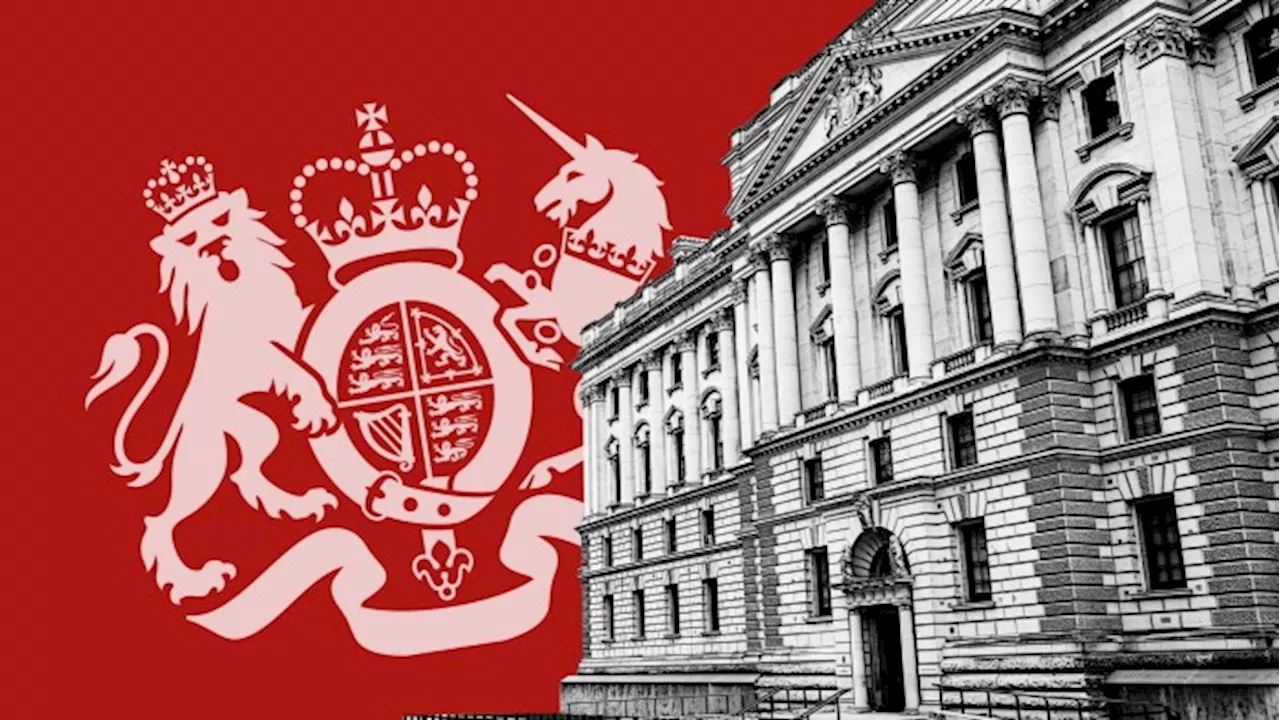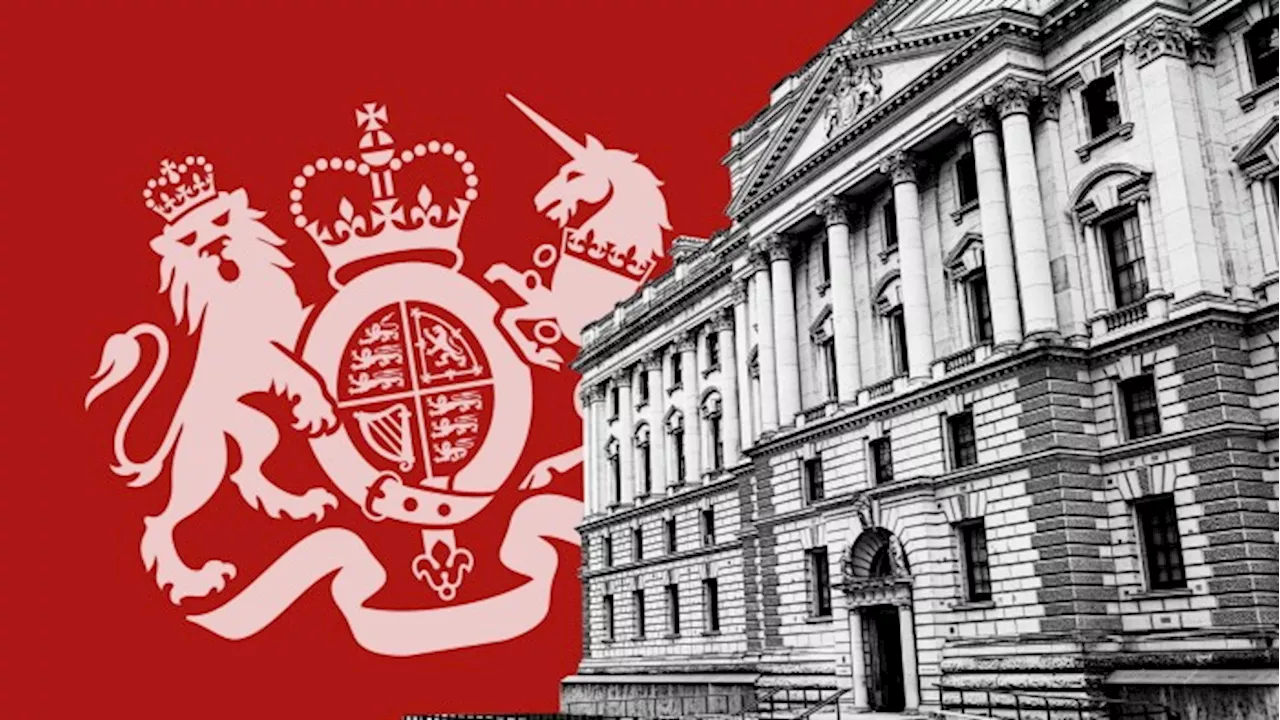UK borrowing costs reached their highest point since the global financial crisis, fueled by a bond sell-off that raises concerns about the Labour government's ability to adhere to its fiscal rules. The rising yields impact the government's budget as interest payments climb.
UK 10-year borrowing costs rose to the highest level since the global financial crisis and sterling sank on Wednesday as an intensifying bond sell-off threatened the Labour government’s ability to meet its self-imposed budget rules. The 10-year gilt yield climbed 0.13 percentage points to 4.82 per cent — its highest level since 2008. Yields move inversely to prices. The yield on the 30-year gilt — which on Tuesday rose to its highest level since 1998 — also climbed, touching 5.38 per cent.
UK borrowing costs have risen much faster in the UK so far in 2025 than other big economies, as investors worry about the government’s heavy borrowing needs and the growing threat of stagflation. The Treasury sought to reassure markets by stressing the government’s commitment to its fiscal rules and ensuring stable public finances. “No one should be under any doubt that meeting the fiscal rules is non-negotiable and the government will have an iron grip on the public finances,” it said. Sterling was down 1.1 per cent against the dollar by late afternoon to $1.234, its weakest level since April. In the stock market, the domestically focused FTSE 250 index fell 2 per cent. “It’s a global sell-off, but being compounded in the UK by the toxic combination of a flatlining economy, sticky inflation and a worsening fiscal outlook,” said Andrew Pease, chief investment strategist at Russell Investments. Chancellor Rachel Reeves left herself a slender £9.9bn of headroom against her revised fiscal rules in the Budget even after announcing a £40bn tax-raising package that aimed to “wipe the slate clean” on public finances. Increases in government debt yields have since put that budgetary wriggle room under threat. The level of bond yields is an important determinant of the budget headroom given its implications for the government’s interest bill, which exceeds £100bn a year
UK Economy Bond Market Fiscal Policy Inflation Government Debt
United Kingdom Latest News, United Kingdom Headlines
Similar News:You can also read news stories similar to this one that we have collected from other news sources.
 UK Borrowing Costs Reach 1998 High as Bond Sell-Off Threatens Fiscal RulesRising interest rates and concerns about a global economic slowdown are pushing UK borrowing costs to their highest level in over two decades.
UK Borrowing Costs Reach 1998 High as Bond Sell-Off Threatens Fiscal RulesRising interest rates and concerns about a global economic slowdown are pushing UK borrowing costs to their highest level in over two decades.
Read more »
 UK Borrowing Costs Surge, Threatening Chancellor's Spending PlansRising UK borrowing costs are putting pressure on Chancellor Rachel Reeves's fiscal plans. The spike in the cost of 30-year bonds, driven by concerns over interest rate cuts and economic growth, has significantly reduced the chancellor's available spending headroom. This could force Ms Reeves to either tighten fiscal policy further or risk breaking her self-imposed rules.
UK Borrowing Costs Surge, Threatening Chancellor's Spending PlansRising UK borrowing costs are putting pressure on Chancellor Rachel Reeves's fiscal plans. The spike in the cost of 30-year bonds, driven by concerns over interest rate cuts and economic growth, has significantly reduced the chancellor's available spending headroom. This could force Ms Reeves to either tighten fiscal policy further or risk breaking her self-imposed rules.
Read more »
 UK Borrowing Costs Surge to Crisis Levels, Threatening BudgetUK government borrowing costs have soared to their highest point since the 2008 financial crisis, pushing sterling to a multi-month low and raising concerns about the government's ability to meet its fiscal targets.
UK Borrowing Costs Surge to Crisis Levels, Threatening BudgetUK government borrowing costs have soared to their highest point since the 2008 financial crisis, pushing sterling to a multi-month low and raising concerns about the government's ability to meet its fiscal targets.
Read more »
 UK Borrowing Costs Reach 1998 High Amid Stagflation FearsThe cost of borrowing for the UK government has surged to its highest level in over two decades, fueled by worries about the Bank of England's ability to lower interest rates and the looming threat of stagflation.
UK Borrowing Costs Reach 1998 High Amid Stagflation FearsThe cost of borrowing for the UK government has surged to its highest level in over two decades, fueled by worries about the Bank of England's ability to lower interest rates and the looming threat of stagflation.
Read more »
 UK Borrowing Costs Reach 1998 High Amid Stagflation FearsThe yield on UK 30-year bonds reached 5.21%, surpassing the levels seen after the 2022 mini-budget. Market analysts attribute the increase to concerns about the Bank of England's ability to cut interest rates due to stagflation risks.
UK Borrowing Costs Reach 1998 High Amid Stagflation FearsThe yield on UK 30-year bonds reached 5.21%, surpassing the levels seen after the 2022 mini-budget. Market analysts attribute the increase to concerns about the Bank of England's ability to cut interest rates due to stagflation risks.
Read more »
 UK Borrowing Costs Soar to 1998 Highs, Threatening Fiscal HeadroomThe yield on the UK's 30-year gilt hit a 25-year high, surpassing levels seen during the fallout from Liz Truss's mini-budget. This surge in borrowing costs threatens to erase the extra borrowing room allowed by Chancellor Rachel Reeves's fiscal rules. The rise is attributed to a global bond sell-off fueled by fears of inflation and concerns over stagflation in the UK. Weakening growth expectations add further pressure to the economic outlook.
UK Borrowing Costs Soar to 1998 Highs, Threatening Fiscal HeadroomThe yield on the UK's 30-year gilt hit a 25-year high, surpassing levels seen during the fallout from Liz Truss's mini-budget. This surge in borrowing costs threatens to erase the extra borrowing room allowed by Chancellor Rachel Reeves's fiscal rules. The rise is attributed to a global bond sell-off fueled by fears of inflation and concerns over stagflation in the UK. Weakening growth expectations add further pressure to the economic outlook.
Read more »
